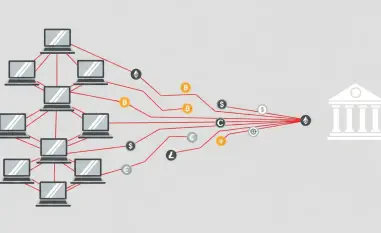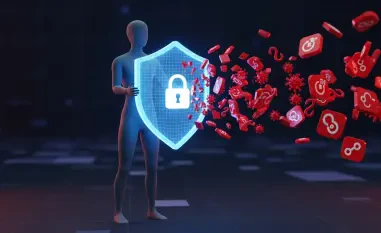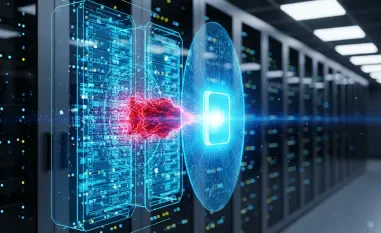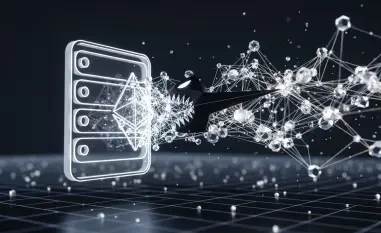Imagine a cyberattack so elusive that it leaves no trace on a system’s hard drive, slipping past traditional security measures like a ghost in the digital realm, challenging organizations to rethink their defense strategies. This is the reality of fileless malware, a sophisticated threat that has surged in prominence as cybercriminals increasingly adopt tactics that operate entirely in memory, creating an urgent need for the cybersecurity landscape to adapt to these invisible adversaries.
Understanding the Fileless Malware Landscape
Fileless malware represents a paradigm shift in cyberthreats, distinguished by its ability to execute attacks without relying on traditional executable files. Unlike conventional malware that writes malicious code to disk, this variant leverages in-memory techniques, making it extraordinarily difficult to detect with standard antivirus tools. Its stealthy nature has positioned it as a favored tool among attackers targeting sensitive data across various sectors.
The significance of this technology lies in its exploitation of trusted system components, blending seamlessly with legitimate processes. By abusing tools already present on a system, fileless malware evades the scrutiny of signature-based detection systems. This growing trend underscores a critical gap in cybersecurity, pushing the industry toward innovative solutions to counter such advanced threats.
Diving into Technical Mechanisms
Exploiting Legitimate System Tools
At the core of fileless malware’s strategy is the misuse of legitimate platforms and utilities to initiate attacks. Tools like ScreenConnect, a widely used remote access software, are often hijacked to establish initial access through malicious domains. This approach, known as living-off-the-land, allows attackers to mask their activities as normal system behavior, significantly reducing the likelihood of detection.
Once access is gained, scripts such as VBScript executed via WScript or PowerShell commands are employed to download payloads directly into memory. These methods bypass the need to save files to disk, rendering traditional file-scanning techniques obsolete. The seamless integration with trusted processes highlights the cunning design of these attacks, necessitating a deeper focus on behavioral analysis for effective mitigation.
Mastery of Memory-Based Execution
The defining characteristic of fileless malware is its operation within a system’s memory, avoiding any footprint on the hard drive. Techniques like reflection and dynamic payload loading enable encoded data to be decoded and executed through .NET assemblies without ever touching the disk. This in-memory execution exemplifies the technical sophistication that sets fileless threats apart from their predecessors.
Such tactics pose unique challenges for security teams, as memory-based activities are transient and harder to trace compared to file-based artifacts. The ability to load malicious payloads directly into a system’s runtime environment underscores the need for advanced memory forensics tools. As these methods evolve, they continue to test the limits of current cybersecurity frameworks.
Dissecting the Multi-Stage Attack Process
Initial Breach and Payload Introduction
The attack chain often begins with a compromise of legitimate platforms, such as a ScreenConnect client, to gain a foothold in the target system. Attackers establish interactive sessions via malicious domains, setting the stage for further exploitation. This initial access is a critical step, enabling the seamless delivery of harmful scripts without triggering immediate suspicion.
Following the breach, scripts like Update.vbs are executed through WScript, triggering PowerShell commands to fetch payloads directly into memory. These payloads, often disguised as innocuous data, are never written to disk, ensuring that traditional security scans remain oblivious to the intrusion. This early stage showcases the meticulous planning behind fileless malware campaigns.
Ensuring Persistence and System Control
Once inside, fileless malware employs tactics to maintain long-term access, often through disguised scheduled tasks such as a “Skype Updater.” These tasks ensure the malware remains active even after system reboots, embedding itself deeper into the environment. Additionally, attackers manipulate system settings to disable security mechanisms like Windows logging and script scanning.
Modular components, such as Obfuscator.dll, play a pivotal role in preparing the system for further exploitation. These elements are designed to initialize runtime environments, load additional payloads, and dynamically resolve APIs, all while evading detection. The strategic use of obfuscation enhances the malware’s ability to operate covertly over extended periods.
Unleashing Remote Access Trojans
The culmination of the attack often involves deploying powerful Remote Access Trojans (RATs) like AsyncRAT, which serves as the command-and-control hub. This RAT enables extensive capabilities, including system reconnaissance, data exfiltration, and the execution of attacker commands. Its sophisticated design includes AES-256 decryption for settings and TCP-based communication protocols.
AsyncRAT’s ability to capture sensitive information—ranging from operating system details to browser extensions like MetaMask and keylogging data—makes it a formidable tool for cybercriminals. The breadth of data it can extract, including clipboard contents and active window titles, amplifies the potential damage. This final stage of the attack chain illustrates the devastating impact of fileless malware when fully realized.
Evaluating Broader Trends and Impacts
The rise of fileless malware reflects a broader trend of increasing complexity in cybercriminal tactics, with a clear shift toward stealth and persistence. By leveraging legitimate tools and in-memory execution, attackers bypass conventional antivirus solutions, highlighting a critical vulnerability in existing defenses. This evolution demands a reevaluation of security protocols to prioritize behavioral and contextual analysis.
Industries such as finance, healthcare, and critical infrastructure bear the brunt of these threats, where data breaches can have catastrophic consequences. Real-world campaigns, like those deploying AsyncRAT, demonstrate the tangible risks, with attackers gaining access to credentials and system artifacts. These incidents serve as stark reminders of the urgent need for robust countermeasures against fileless techniques.
Assessing Detection Challenges
Detecting fileless malware remains a formidable challenge due to its evasion of disk-based security tools. Traditional methods that rely on file signatures are ineffective against threats that operate solely in memory, leaving systems vulnerable to prolonged exploitation. This gap in detection capabilities calls for a shift toward more dynamic monitoring approaches.
Efforts within the cybersecurity community are increasingly focused on behavior-based detection and endpoint hardening to address these elusive threats. However, analyzing memory-based activities requires specialized tools and expertise, which are not yet universally adopted. The ongoing struggle to keep pace with these sophisticated attacks emphasizes the complexity of securing modern digital environments.
Looking Ahead at Defense Innovations
The future of combating fileless malware hinges on advancements in memory forensics and machine learning-driven detection methodologies. These technologies promise to enhance the ability to identify anomalous in-memory activities, offering a proactive stance against stealthy threats. Additionally, threat hunting initiatives are gaining traction as a means to uncover hidden attacks before they escalate.
Industry-wide collaboration will be essential to stay ahead of evolving fileless tactics, with shared intelligence playing a key role in developing effective defenses. The long-term impact on cybersecurity policies will likely involve stricter regulations and standards for endpoint security. As these threats persist, continuous innovation remains paramount to safeguarding digital assets.
Final Reflections and Strategic Next Steps
Reflecting on the examination of fileless malware, it becomes evident that its stealthy execution and exploitation of legitimate tools pose unprecedented challenges to traditional security measures. The deployment of RATs like AsyncRAT reveals the depth of potential damage, with attackers gaining extensive control over compromised systems. This review highlights the critical gaps in detection that allow such threats to thrive unchecked.
Moving forward, organizations must prioritize the adoption of behavior-based monitoring tools to identify suspicious activities in real time. Investing in memory forensics capabilities proves to be a necessary step to trace transient threats that evade conventional scans. Furthermore, fostering collaboration across sectors to share threat intelligence can help build a collective defense against the ever-evolving landscape of fileless malware, ensuring a more resilient cybersecurity posture.













